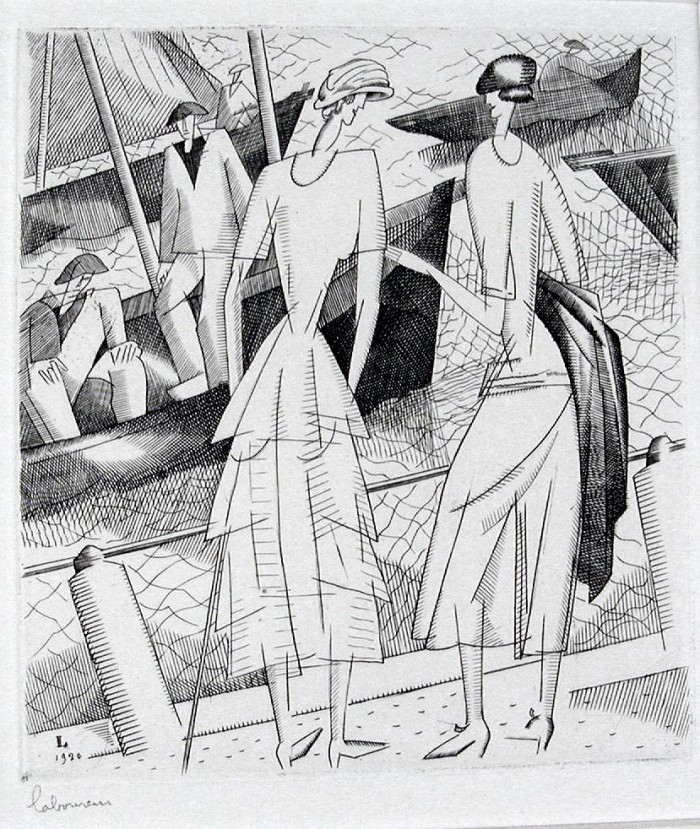Jeunes Filles Sur Le Port

Jean-Emile Laboureur, Jeunes Filles Sur Le Port, 1920, engraving, signed in pencil [also initialed and dated in the plate]. Reference: Godefry, Sylvain Laboureur 200, second state of two. An artist’s proof apart from the edition of 85 in this state; there were about 110 impressions printed in all before the plate was cancelled. In pristine condition, the full sheet with deckle edges, 6 x 5 3/8, the sheet 11 x 9 inches, archival mounting.
A fine clear impression.
Jean-Emile Laboureur was born in Nantes in 1877. He traveled to Paris in 1895 intending to study law at the Sorbonne, but found himself drawn to the nearby famed Academie Julian, and although he never officially matriculated there, he became immersed in the Parisian art scene. The great wood engraver Auguste Lepere taught him woodcutting, which initiated Laboureur in an involvement in printmaking that would extend through his career. In 1886 he met Toulouse Lautrec, who influenced Laboureur’s emerging aesthetic style, as did the work of Odilon Redon, Bonnard, and perhaps most notably Felix Vallotton, who became a close colleague, and whose woodcut work often bears a close relationship to Laboureur’s.
Laboureur traveled widely, staying for periods in the US and London, and studying classic art and printmaking in Italy and Germany. Although he had moved back to Paris by 1910, a time when analytical cubism was emerging in the work of Picasso and Braque, he continued working in an abstract, modernist mode, waiting until about 1913 or shortly thereafter to invent a cubist idiom all his own. Cubism remained an important theme for Laboureur, a theme he varied, sometimes using it as a strong design or compositional component, as in this engraving, sometimes only as a subtle background element. His experiments with engraving, started about 1915, began perhaps because of the difficulty of carrying complicated etching materials while working as an interpreter in the British Army, but were also based on his familiarity with the old masters, who typically worked in engraving.
Few modern artists use engraving, for although it doesn’t require much equipment, it is far more difficult and time consuming than etching. But engraving became his method, and the clear, clean engraving line seemed to complement Laboureur’s cubism. This happy marriage of cubism and engraving is demonstrated in Jeunes Filles Sur Le Port.
$1200